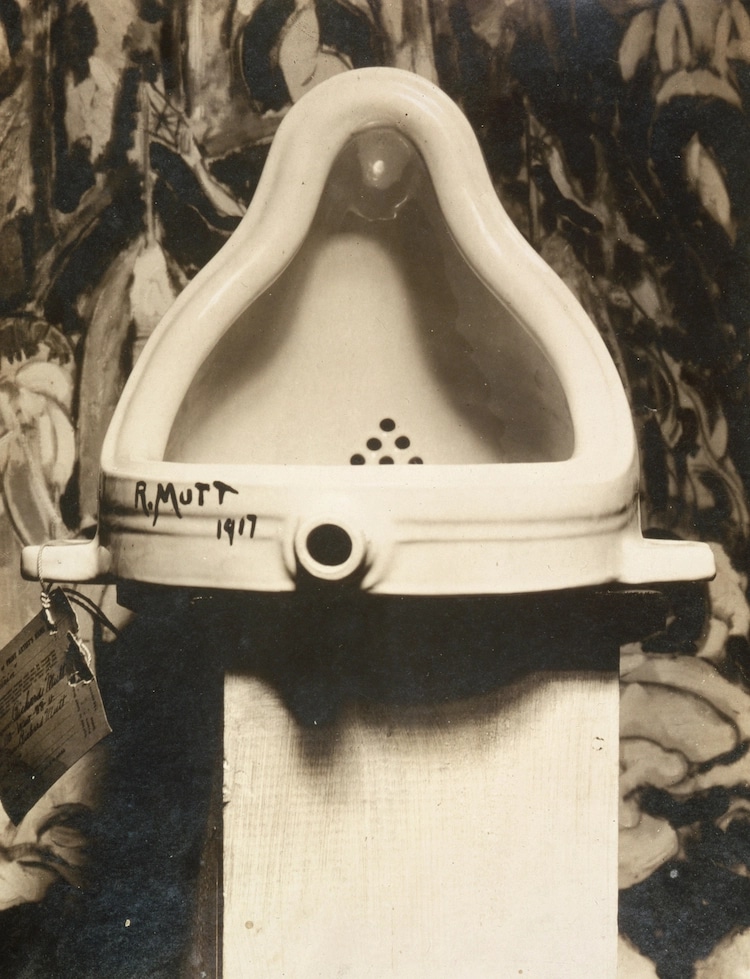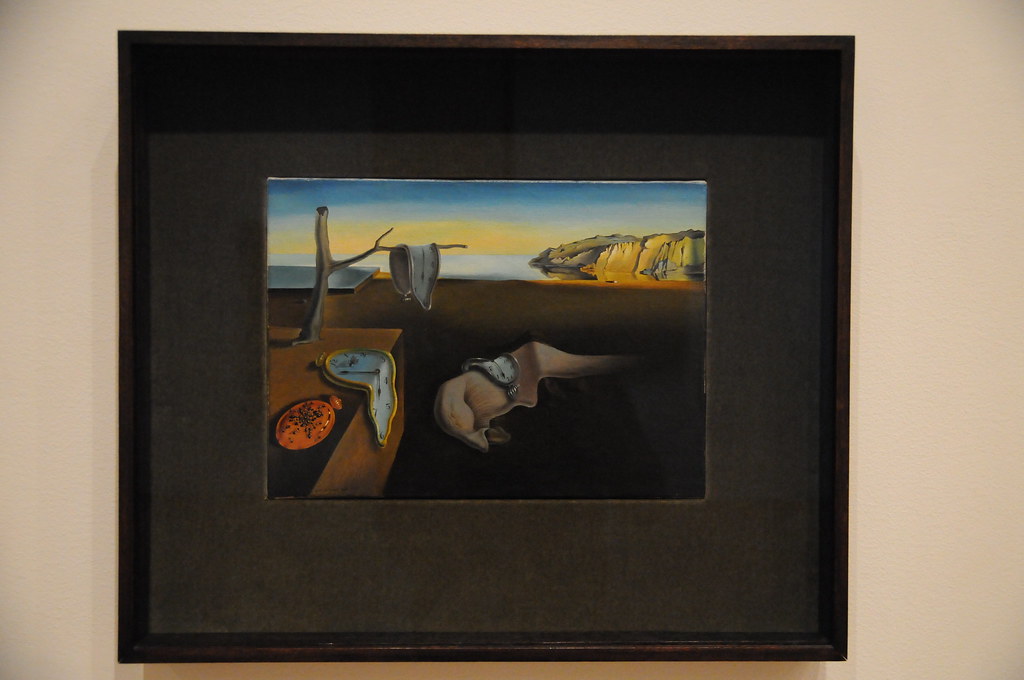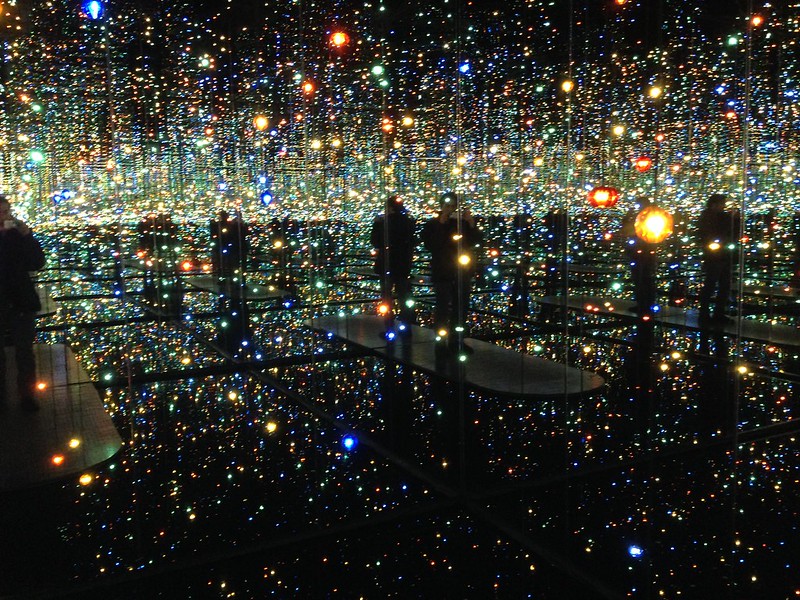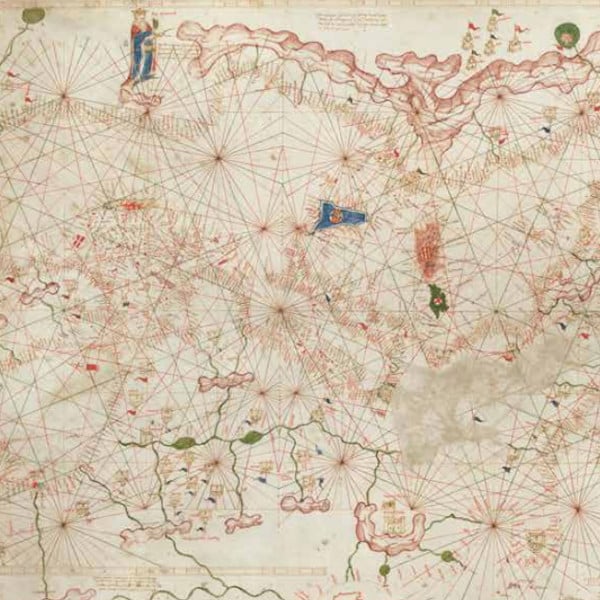
Looking back through Western history, it's incredible to see how many types of art have made an impact on society. By tracing a timeline through different art movements, we're able to not only see how modern and contemporary art has developed, but also how art is a reflection of its time.
For instance, did you know that Impressionism was once considered an underground, controversial movement or that Abstract Expressionism signaled a shift in the art world from Paris to New York? Like building blocks, from Realism to Lowbrow, these different types of art are interconnected. As the creative pendulum swings, artistic styles are often reactions against or homages to their predecessors. And by looking back at some of the most important art movements in history, we have a clearer understanding of how famous artists like Van Gogh, Picasso, and Warhol have revolutionized the art world.
These visual art movements are fundamental to understanding the different types of art that shape modern history.
Italian Renaissance Art

Michelangelo, “David,” 1501 – 1504 (Photo: Jörg Bittner Unna via Wikimedia Commons, CC BY-SA 3.0)
From the 14th through 17 century, Italy underwent an unprecedented age of enlightenment. Known as the Renaissance—a term derived from the Italian word Rinascimento, or “rebirth”—this period saw increased attention to cultural subjects like art and architecture.
Italian Renaissance artists like Michelangelo, Leonardo da Vinci, and Raphael found inspiration in classical art from Ancient Rome and Greece, adopting ancient interests like balance, naturalism, and perspective. In Renaissance-era Italy, this antiquity-inspired approach materialized as humanist portrait painting, anatomically correct sculpture, and harmonious, symmetrical architecture.
Artists to Know: Sandro Botticelli, Leonardo da Vinci, Michelangelo, Raphael, Titian
Iconic Artwork: Birth of Venus by Sandro Botticelli (1486), The Last Supper by Leonardo da Vinci (1495 – 1498), Mona Lisa (c. 1503 – 1506), David by Michelangelo (1501 – 1504), The School of Athens by Raphael (1509 – 1511)
Baroque
Toward the end of the Renaissance, the Baroque movement emerged in Italy. Like the preceding genre, Baroque art showcased artistic interests in realism and rich color. Unlike Renaissance art and architecture, however, Baroque works also emphasized extravagance.
This opulence is evident in Baroque painting, sculpture, and architecture. Painters like Caravaggio suggested drama through their treatment of light and depiction of movement. Sculptors like Bernini achieved a sense of theatricality through dynamic contours and intricate drapery. And architects across Europe embellished their designs with ornamentation ranging from intricate carvings to imposing columns.
Artists to Know: Caravaggio, Rembrandt, Bernini
Iconic Artwork: The Calling of Saint Matthew by Caravaggio (1599 –1600), The Night Watch by Rembrandt (1642), The Ecstasy of St. Teresa by Bernini (1647 – 1652)
Rococo

Jean-Honoré Fragonard, “The Swing,” 1767 (Photo: Wikimedia Commons, Public domain)
Following the extravagance and power of Baroque art came the lighthearted and flirtatious Rococo movement, which blossomed in 18th-century France before spreading to other European countries. The term Rococo derives from rocaille, a method of decoration using pebbles, seashells, and cement to adorn grottoes and fountains in the Renaissance. During the 1730s, the rocaille decoration inspired scrolling curves in ornamental furniture and interior design. In painting, this decorative style transferred to a love of whimsical narratives, pastel colors, and fluid forms.
Artists to know: Jean-Honoré Fragonard, Antoine Watteau, François Boucher
Iconic Artwork: The Swing by Jean-Honoré Fragonard (1767)
Neoclassicism

Jacques-Louis David, “The Oath of the Horatii,” 1784–5 (Photo: Wikimedia Commons, Public domain)
Neoclassicism is an 18th-century art movement based on the ideals of art from Rome and Ancient Greece. Its interest in simplicity and harmony was partially inspired as a negative reaction to the overly frivolous aesthetic of the decorative Rococo style. The discovery of Roman archaeological cities Pompeii and Herculaneum (in 1738 and 1748, respectively) helped galvanize the spirit of this movement.
Artists to Know: Jacques-Louis David, Jean-Auguste-Dominique Ingres, Antonio Canova
Iconic Artwork: The Oath o the Horatii by Jacques-Louis David (1784–1785), The Death of Socrates by Jacques-Louis David (1787), Death of Marat by Jacques-Louis David (1793), The Grande Odalisque by Ingres (1814)
Romanticism

Eugène Delacroix, “Liberty Leading the People,” 1830 (Photo: Wikimedia Commons, Public domain)
Romanticism was a cultural movement that emerged around 1780. Until its onset, Neoclassicism dominated 18th-century European art, typified by a focus on classical subject matter, an interest in aesthetic austerity, and ideas in line with the Enlightenment, an intellectual, philosophical, and literary movement that placed emphasis on the individual.
Artists like Eugène Delacroix found inspiration in their own imaginations. This introspective approach lent itself to an art form that predominantly explored the spiritual.
Artists to Know: Joseph Mallord William Turner, Eugène Delacroix, Theodore Gericault, Francisco Goya
Iconic Artwork: Wanderer Above the Sea of Fog by Caspar David Friedrich (1818), Liberty Leading the People by Delacroix (1830)
Realism

Jean-François Millet, “The Gleaners,” 1857 (Photo: Google Arts & Culture via Wikimedia Commons, Public domain)
Realism is a genre of art that started in France after the French Revolution of 1848. A clear rejection of Romanticism, the dominant style that had come before it, Realist painters focused on scenes of contemporary people and daily life. What may seem normal now was revolutionary after centuries of painters depicting exotic scenes from mythology and the Bible, or creating portraits of the nobility and clergy.
French artists like Gustave Courbet and Honoré Daumier, as well as international artists like James Abbott McNeill Whistler, focused on all social classes in their artwork, giving voice to poorer members of society for the first time and depicting social issues stemming from the Industrial Revolution. Photography was also an influence on this type of art, pushing painters to produce realistic representations in competition with this new technology.
Artists to Know: Gustave Courbet, Jean-Baptiste-Camille Corot, Jean-François Millet, James McNeill Whistler
Iconic Artwork: The Gleaners by Jean-François Millet (1857), The Burial at Ornans by Gustave Courbet (1849 – 1850)
Impressionism

Claude Monet, “Water Lilies,” 1906 (Photo: Wikimedia Commons, Public domain)
It may be hard to believe, but this now beloved art genre was once an outcast visual movement. Breaking from Realism, Impressionist painters moved away from realistic representations to use visible brushstrokes, vivid colors with little mixing, and open compositions to capture the emotion of light and movement. Impressionism started when a group of French artists broke with academic tradition by painting en plein air—a shocking decision when most landscape painters executed their work indoors in a studio.
The original group, which included Claude Monet, Pierre-Auguste Renoir, Alfred Sisley, and Frédéric Bazille, was formed in the early 1860s in France. Additional artists would join in forming their own society to exhibit their artwork after being rejected by the traditional French salons, who deemed it too controversial to exhibit. This initial underground exhibition, which took place in 1874, allowed them to gain public favor.
Artists to Know: Claude Monet, Camille Pissarro, Pierre-Auguste Renoir, Mary Cassatt
Iconic Artwork: Impression, Sunrise by Monet (1872), Bal du Moulin de la Galette by Renoir (1876), Water Lilies series by Monet (1890s – 1900s)
Post-Impressionism

Vincent van Gogh, “The Starry Night,” 1889 (Photo: Wikimedia Commons, Public domain)
Again originating from France, this type of art developed between 1886 and 1905 as a response to the Impressionist movement. This time, artists reacted against the need for naturalistic depictions of light and color in Impressionist art. As opposed to earlier styles, Post-Impressionism covers many different types of art, from the Pointillism of Georges Seurat to the Symbolism of Paul Gauguin.
Not unified by a single style, artists were united by the inclusion of abstract elements and symbolic content in their artwork. Perhaps the most well-known Post-Impressionist is Vincent van Gogh, who used color and his brushstrokes not to convey the emotional qualities of the landscape, but his own emotions and state of mind.
Artists to Know: Georges Seurat, Vincent van Gogh, Paul Cézanne, Paul Gauguin, Émile Bernard
Iconic Artwork: A Sunday Afternoon on La Grande Jatte by Georges Seurat (1884 – 1886), The Starry Night by Vincent van Gogh (1889), The Yellow Christ by Paul Gauguin (1891)
Art Nouveau

Alphonse Mucha, “Four Seasons,” 1897 (Photo: Wikimedia Commons, Public domain)
At the end of the 19th century, a movement of “new art” swept through Europe. Characterized by an interest in stylistically reinterpreting the beauty of nature, artists from across the continent adopted and adapted this avant-garde style. As a result, it materialized in sub-movements like the Vienna Secession in Austria, Modernisme in Spain, and, most prominently, Art Nouveau in France.
The French Art Nouveau style was embraced by artists working in a range of mediums. In addition to the fine arts, like painting and sculpture, it featured heavily in architecture and decorative arts of the period. However, perhaps its most enduring legacy can be found in the poster—a commercial craft that Czech artist Alphonse Mucha helped elevate as a modern art form.
Artists to Know: Alphonse Mucha, Gustav Klimt
Iconic Artwork: The Four Seasons by Alphonse Mucha, The Kiss by Gustav Klimt
Cubism

Pablo Picasso, “Les Demoiselles d'Avignon,” 1907 (Photo: Wikimedia Commons, Fair Use)
A truly revolutionary style of art, Cubism is one of the most important art movements of the 20th century. Pablo Picasso and Georges Braque developed Cubism in the early 1900s, with the term being coined by art critic Louis Vauxcelles in 1907 to describe the artists. Throughout the 1910s and 1920s, the two men—joined by other artists—would use geometric forms to build up the final representation. Completely breaking from any previous art movement, objects were analyzed and broken apart, only to be reassembled into an abstract form.
This reduction of images to minimal lines and shapes was part of the Cubist quest for simplification. The minimalist outlook also trickled down into the color palette, with Cubists forgoing shadowing and using limited hues for a flattened appearance. This was a clear break from the use of perspective, which has been the standard since the Renaissance. Cubism opened the doors for later art movements, like Surrealism and Abstract Expressionism, by throwing out the prescribed artist's rulebook.
Artists to Know: Pablo Picasso, Georges Braque, Juan Gris
Iconic Artwork: Les Demoiselles d'Avignon by Pablo Picasso (1907)
Futurism

Giacomo Balla, “Dynamism of a Dog on a Leash,” 1912 (Photo: Wikimedia Commons, Public domain)
Fascinated by new industry and thrilled by what lay ahead, the early 20th-century Futurists carved out a place in history. Growing out of Italy, these artists worked as painters, sculptors, graphic designers, musicians, architects, and industrial designers. As the early manifesto did not directly address the artistic output of Futurism, it took some time before there was a cohesive visual. A hallmark of Futurist art is the depiction of speed and movement. In particular, they adhered to principles of “universal dynamism,” which meant that no single object is separate from its background or another object.
This is best exemplified in Giacomo Balla’s Dynamism of a Dog on a Leash, where the motion of walking the dog is shown through the multiplying of the dog’s feet, leash, and owner’s legs.
Artists to Know: Giacomo Balla, Umberto Boccioni
Iconic Artwork: Dynamism of a Dog on a Leash by Giacomo Balla (1912), Unique Forms of Continuity in Space by Umberto Boccioni (1913)
Dada

Marcel Duchamp, “Fountain,” 1917 (Photo: Wikimedia Commons, Public domain)
Dada was a 20th-century avant-garde art movement (often referred to as an “anti-art” movement) born out of the tumultuous societal landscape and turmoil of WWI. It began as a vehement reaction and revolt against the horrors of war and the hypocrisy and follies of bourgeois society that had led to it. In a subversion of all aspects of Western civilization (including its art), the ideals of Dada rejected all logic, reason, rationality, and order—all considered pillars of an evolved and advanced society since the days of the Enlightenment.
Artists to Know: Marcel Duchamp, Man Ray, Tristan Tzara
Iconic Artwork: Fountain by Marcel Duchamp (1917)
Bauhaus

Poster for the Bauhaus movement by Joos Schmidt, 1923 (Photo: Wikimedia Commons, Public domain)
Ranging from paintings and graphics to architecture and interiors, Bauhaus art dominated many outlets of experimental European art throughout the 1920s and 1930s. Though it is most closely associated with Germany, it attracted and inspired artists of all backgrounds. Bauhaus—literally translated to “construction house”—originated as a German school of the arts in the early 20th century. Founded by Walter Gropius, the school eventually morphed into its own modern art movement characterized by its unique approach to architecture and design.
Artists to Know: Wassily Kandinsky, Paul Klee, Joost Schmidt, Marcel Breur
Iconic Artwork: Yellow-Red-Blue by Wassily Kandinsky (1925), Wassily Chair by Marcel Breur (1925)
Art Deco
Art Deco is a modernist movement that emerged in 1920s Europe. While many different aesthetics compose the movement—including different color palettes and a range of materials, from ebony and ivory to wood and plastic—it is most frequently characterized by streamlined, geometric forms contrasted by rich ornamentation and linear decoration.
Paintings produced in the Art Deco style typically feature bold forms and busy compositions. Some, like those by Polish-born painter Tamara de Lempicka, depict dynamic portraits of stylish subjects. Typically, these figures are dressed in bright colors and set in abstract metropolitan locations.
Artists to Know: Tamara de Lempicka
Iconic Artwork: Tamara in a Green Bugatti by Tamara de Lempicka (1929)
Surrealism
A precise definition of Surrealism can be difficult to grasp, but it's clear that this once avant-garde movement has staying power, remaining one of the most approachable art genres, even today. Imaginative imagery spurred by the subconscious is a hallmark of this type of art, which started in the 1920s. The movement began when a group of visual artists adopted automatism, a technique that relied on the subconscious for creativity.
Tapping into the appeal for artists to liberate themselves from restriction and take on total creative freedom, Surrealists often challenged perceptions and reality in their artwork. Part of this came from the juxtaposition of a realistic painting style with unconventional, and unrealistic, subject matters.
Artists to Know: Salvador Dalí, Max Ernst, René Magritte
Iconic Artwork: The Treachery of Images by René Magritte (1929), The Persistence of Memory by Salvador Dalí (1931)
Abstract Expressionism
Abstract Expressionism is an American art movement—the first to explode on an international scale—that started after World War II. It solidified New York as the new center of the art world, which had traditionally been based in Paris. The genre developed in the 1940s and 1950s, though the term was also used to describe work by earlier artists like Wassily Kandinsky. This style of art takes the spontaneity of Surrealism and injects it with the dark mood of trauma that lingered post-War.
Jackson Pollock is a leader of the movement, with his drip paintings spotlighting the spontaneous creation and gestural paint application that defines the genre. The term “Abstract Expressionism,” though closely married to Pollock’s work, isn’t limited to one specific style. Work as varied as Willem de Kooning’s figurative paintings and Mark Rothko’s color fields are grouped under the umbrella of Abstract Expressionism.
Artists to Know: Jackson Pollock, Willem de Kooning, Clyfford Still, Mark Rothko
Iconic Artwork: Autumn Rhythm (Number 30) by Jackson Pollock
Pop Art
Rising up in the 1950s, Pop Art is a pivotal movement that heralds the onset of contemporary art. This post-war style emerged in Britain and America, including imagery from advertising, comic books, and everyday objects. Often satirical, Pop Art emphasized banal elements of common goods and is frequently thought of as a reaction against the subconscious elements of Abstract Expressionism.
Roy Lichtenstein’s bold, vibrant work is an excellent example of how parody and pop culture merged with fine art to make accessible art. Andy Warhol, the most famous of the Pop Art figures, helped push the revolutionary concept of art as mass production, creating numerous silkscreen series of his popular works.
Artists to Know: Andy Warhol, Roy Lichtenstein, Jasper Johns
Iconic Artwork: Campbell's Soup Cans by Andy Warhol (1962)
Installation Art
In the middle of the 20th century, avant-garde artists in America and Europe began producing Installation Art. Installations are three-dimensional constructions that play with space to interactively engage viewers. Often large-scale and site-specific, these works of art transform museums, galleries, and even outdoor locations into immersive environments.
Inspired by Marcel Duchamp's Dadaist Readymades—a series of found objects contextualized as sculptures— this important genre was pioneered by modern masters like Yayoi Kusama and Louise Bourgeois. Today, contemporary artists keep his practice alive, crafting experimental installations from mediums like string, paper, and flowers.
Artists to Know: Yayoi Kusama, Louise Bourgeois, Damien Hirst
Iconic Artwork: Mirror Rooms by Yayoi Kusama
Kinetic Art

“Rouge Triomphant (Triumphant Red)” by Alexander Calder. 1959–1965.
The seemingly contemporary art movement actually has its roots in Impressionism, when artists first began attempting to express movement in their art. In the early 1900s, artists began to experiment further with art in motion, with sculptural machine and mobiles pushing kinetic art forward. Russian artists Vladimir Tatlin and Alexander Rodchenko were the first creators of sculptural mobiles, something that would later be perfected by Alexander Calder.
In contemporary terms, kinetic art encompasses sculptures and installations that have movement as their primary consideration. American artist Anthony Howe is a leading figure in the contemporary movement, using computer-aided design for his large-scale wind-driven sculptures.
Artists to Know: Alexander Calder, Jean Tinguely, Anthony Howe
Iconic Artwork: Arc of Petals by Alexander Calder
Photorealism

“Untitled” by Yigal Ozeri. 2012.
Photorealism is a style of art that is concerned with the technical ability to wow viewers. Primarily an American art movement, it gained momentum in the late 1960s and 1970s as a reaction against Abstract Expressionism. Here, artists were most concerned with replicating a photograph to the best of their ability, carefully planning out their work to great effect and eschewing the spontaneity that is the hallmark of Abstract Expressionism. Similar to Pop Art, Photorealism is often focused on imagery related to consumer culture.
Early Photorealism was steeped in nostalgia for the American landscape, while more recently, photorealistic portraits have become a more common subject. Hyperrealism is an advancement of the artistic style, where painting and sculpture are executed in a manner to provoke a superior emotional response and to arrive at higher levels of realism due to technical developments. A common thread is that all works must start with a photographic reference point.
Artists to Know: Chuck Close, Ralph Going, Yigal Ozeri
Iconic Artwork: Untitled by Yigal Ozeri
Lowbrow
Lowbrow, also called pop surrealism, is an art movement that grew out of an underground California scene in the 1970s. Traditionally excluded from the fine art world, lowbrow art moves from painted artworks to toys, digital art, and sculpture. The genre also has its roots in underground comix, punk music, and surf culture, with artists not seeking acceptance from mainstream galleries. By mixing surrealism imagery with pop colors or figures, artists achieve dreamlike results that often play on erotic or satirical themes. The rise of magazines like Juxtapoz and Hi-Fructose have given lowbrow artists a forum to display their work outside of mainstream contemporary art media.
Artists to Know: Mark Ryden, Ray Caesar, Audrey Kawasaki
Iconic Artwork: Incarnation by Mark Ryden
This article has been edited and updated.
Related Articles:
Art History: What is Line Art?
Exploring the Cutting-Edge History and Evolution of Collage Art
10 Cutting-Edge Artists Who Create Inventive 21st Century Art
Guggenheim Releases More Than 1,700 Masterful Works of Modern Art Online
Street Artist’s “Neo Post Cubism” Graffiti Combines Cubism with Realism



























































































